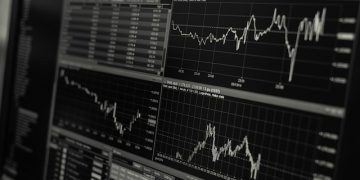The NASDAQ 100 and QQQ have actually rallied by more than 20%.
The rally has sent the ETF right into miscalculated territory.
These sorts of rallies are not uncommon in bearish market.
Searching for an aiding hand in the market? Members of Checking out The Markets obtain unique ideas as well as support to browse any kind of environment. Learn More “
The NASDAQ 100 ETF (NASDAQ: QQQ), qqq stock quote has actually seen an explosive short-covering rally over the past several weeks as funds de-risk their portfolios. It has pushed the QQQ ETF up virtually 23% since the June 16 lows. These sorts of rallies within nonreligious bearishness are not all that uncommon; rallies of similar size or more value have actually taken place throughout the 2000 and also 2008 cycles.
To make matters worse, the PE proportion of the NASDAQ 100 has skyrocketed back to levels that place this index back into pricey territory on a historic basis. That proportion is back to 24.9 times 2022 earnings quotes, pressing the proportion back to one standard deviation above its historic average given that the middle of 2009 and also the standard of 20.2.
In addition to that, earnings quotes for the NASDAQ 100 are on the decrease, dropping roughly 4.5% from their height of $570.70 to around $545.08 per share. At the same time, the exact same price quotes have actually increased just 3.8% from this point in time a year ago. It suggests that paying nearly 25 times incomes estimates is no bargain.
Real returns have actually risen, making the NASDAQ 100 much more costly compared to bonds. The 10-Yr suggestion currently trades around 35 bps, up from a -1.1% in August 2021. Meanwhile, the profits yield for the NASDAQ has risen to around 4%, which means that the spread in between real yields and also the NASDAQ 100 revenues return has actually narrowed to simply 3.65%. That spread in between the NASDAQ 100 and also the genuine yield has tightened to its floor considering that the autumn of 2018.
Economic Conditions Have Reduced
The factor the spread is getting is that financial conditions are reducing. As financial conditions reduce, it appears to cause the spread in between equities and also genuine yields to narrow; when economic problems tighten, it creates the infect expand.
If economic conditions ease even more, there can be further several development. Nonetheless, the Fed desires rising cost of living rates to come down and is striving to reshape the yield curve, and that work has actually begun to display in the Fed Fund futures, which are removing the dovish pivot. Prices have climbed substantially, particularly in months as well as years past 2022.
But much more notably, for this monetary policy to effectively surge via the economy, the Fed requires monetary conditions to tighten up as well as be a restrictive pressure, which means the Chicago Fed nationwide monetary problems index requires to move above no. As economic conditions begin to tighten up, it needs to lead to the spread widening again, leading to more multiple compression for the worth of the NASDAQ 100 as well as causing the QQQ to decline. This might cause the PE proportion of the NASDAQ 100 falling back to around 20. With earnings this year estimated at $570.70, the worth of the NASDAQ 100 would be 11,414, an almost 16% decline, sending the QQQ back to a range of $275 to $280.
Not Uncommon Task
Additionally, what we see in the marketplace is absolutely nothing new or unusual. It happened during the two most recent bear markets. The QQQ climbed by 41% from its intraday short on May 24, 2000, till July 17, 2000. Then just a number of weeks later, it did it again, increasing by 24.25% from its intraday short on August 3, 2000, until September 1, 2000. What adhered to was a really steep selloff.
The same thing occurred from March 17, 2008, up until June 5, 2008, with the index climbing by 23.3%. The point is that these unexpected and sharp rallies are not uncommon.
This rally has taken the index and also the ETF back into a miscalculated stance and backtracked some of the much more recent decreases. It likewise placed the focus back on economic problems, which will certainly need to tighten up more to begin to have actually the preferred result of reducing the economic climate and reducing the rising cost of living price.
The rally, although good, isn’t likely to last as Fed financial policy will require to be extra limiting to efficiently bring the inflation price back to the Fed’s 2% target, which will imply vast spreads, reduced multiples, and slower development. All bad news for stocks.



